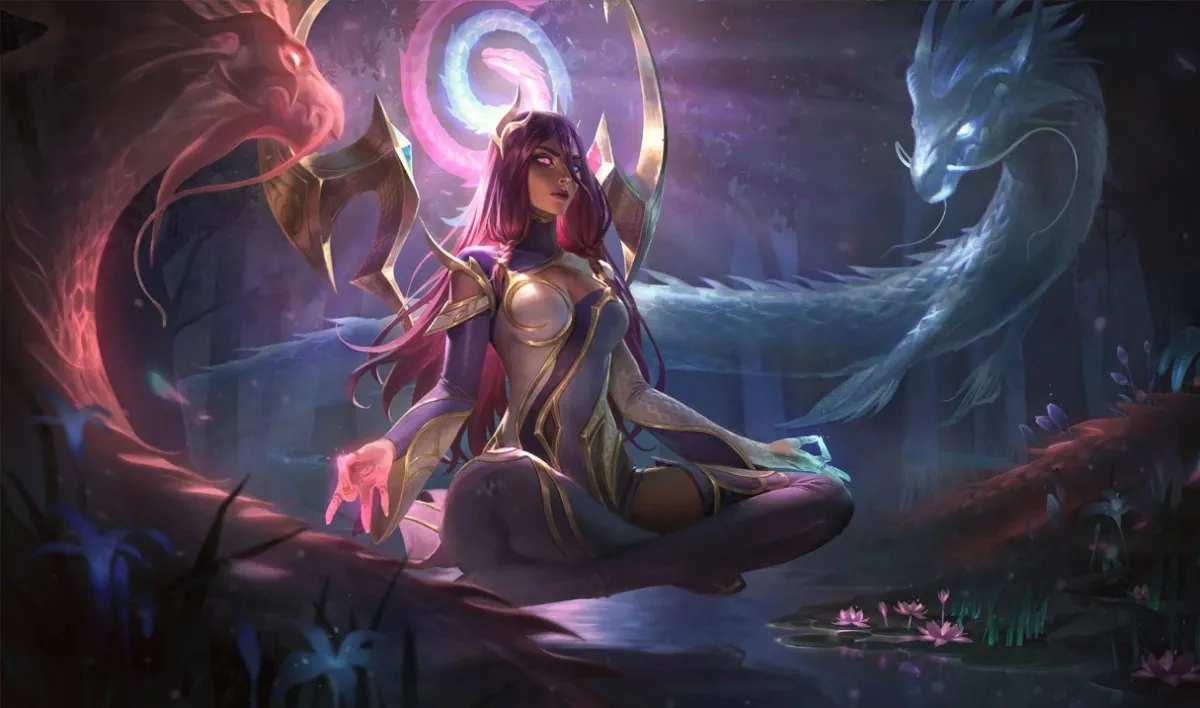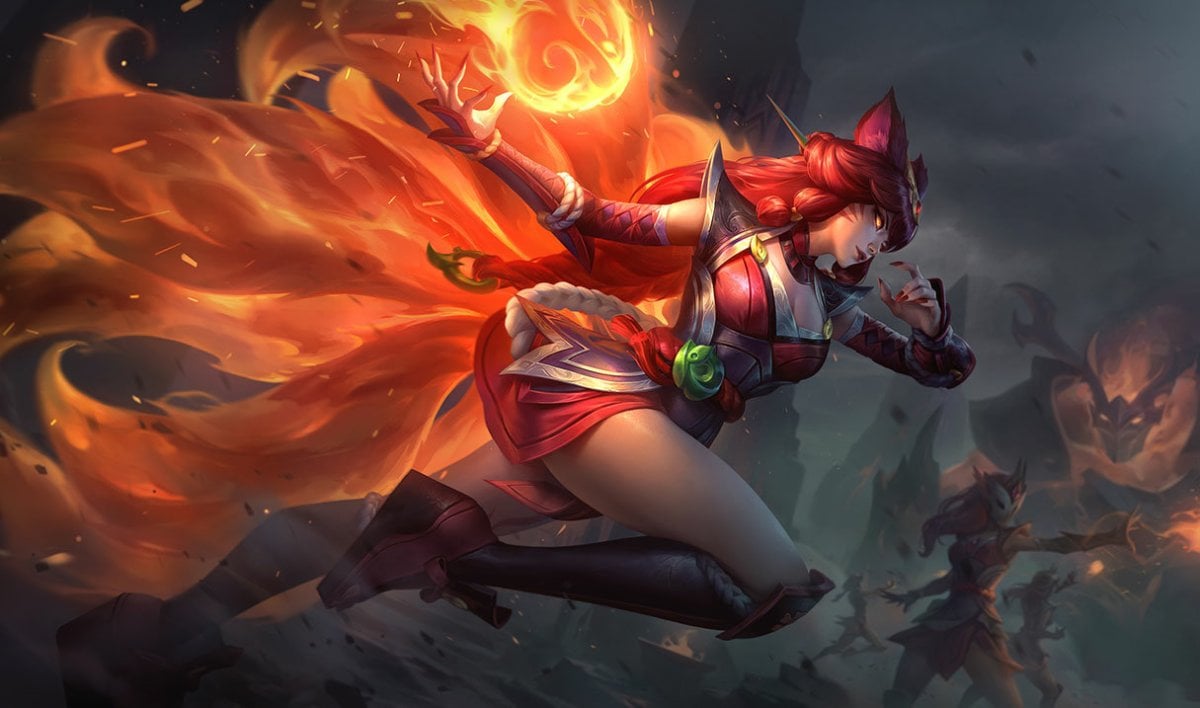Riot Games is a company that has received increasing attention over the last few years for its game League of Legends. They have attracted a player base of millions, and have generated an extremely popular esports scene that culminates with the biggest tournament of the League of Legends season: the World Championships. Public concern, however, has recently been expressed that the League pick and ban phase, where players choose which characters to play in each match, is flawed. The general consensus is that the pick and ban phase has not kept up to the demands of the game, with the numbers of bans staying the same for years despite the massively expanded cast of champions a player may choose from. However, what critics of the pick and ban phase fail to do is examine the problem and identify the real flaw in the system: Riot Games’ balance team.
Riot likes to make constant changes to League of Legends, changing the landscape of the game every few weeks. As each patch goes to the live servers, players are forced to examine all possible characters and item builds, determining what combinations of these are the most powerful. These powerful combinations become what is referred to as the meta of the game, and defines the way players play the game until the next patch, when the process must be repeated. Despite the fact that Riot brings change to the game, there is no backlash. Players passively accept that the game is going to change every few weeks, giving them no time to examine changes and master the game to any degree before the meta shifts again.
During the Season 4 World Championships, the team Samsung Galaxy White came out the clear victors, smashing all competition that came to challenge their dominance. White only achieved this level of dominance because their sister team, Samsung Galaxy Blue, was the team that experimented with new champions and strategies and realized what the best way to play was at the time, and helped SSW to adapt to the meta in time for the World Championship. Blue was the team that had dominated their sister team all year because they had the ability to adapt more quickly than White. White came to prominence because Worlds was held on a patch that held no major changes from the months leading up to the competition. The teams entering the tournament were given time to get comfortable with the meta and perfect their strategies and mechanical abilities. Their dominance came because they were clearly the best team at the time of the tournament.
The Season 5 World Championships came soon after major changes were introduced to the game. Riot left themselves and the players little time before the tournament to adapt to the changes they introduced, and made the changes at a time when there were only a handful of games in one region left to play. This meant that going into the biggest event of the year, there were only a few teams that had any competitive experience at all on the patch, and even these teams hadn’t played competitively on the official World’s patch. Because of these factors, the first week of the Group Stage was dominated by surprise upsets from teams with lesser skill than their competitors, but who were able to successfully implement surprise picks that their opponents had never faced before. The second week went more towards the directions that the analysts predicted, and the tournament was eventually taken by the favorites, but the first week demonstrated an inexcusable flaw in Riot’s system: they are too rash when it comes to champion balance.
Riot Games is a company that relies on public testing to successfully balance their champions: their internal balancing team isn’t nearly expansive enough to determine adequate tuning for their changes prior to release to the live servers. This means that they aren’t always going to be able to produce patches for the game that do exactly as they intend to. In the case of the Season 5 World Championship, they introduced changes that shook up the entire meta of the game mere weeks before the biggest tournament of the year. They also introduced these sweeping changes at a point where the vast majority of the world was finished their competitive seasons, meaning teams didn’t get to practice against other serious opponents when these changes came out. This timing lead to a massively imbalanced tournament, where several champions dominated the game: Gangplank, Mordekaiser, Elise, and Lulu all sat above a 90% pick/ban rate. This indicates a massive disparity in power compared to the rest of the champions in the game. Though there were 74 unique champions picked in the tournament, 21 of these were only picked in one or two games. Along the same lines, 27 champions were picked in 10 or more games. Going further, of those 27, only 13 had winrates above 50%. This indicates that, factoring out champions who may have been played successfully as surprise picks a handful of times, only 13 champions in the entire game were any good during the biggest tournament of the year.
Things become worse as you get deeper into the tournament. In the Finals alone, an astonishing 10 champions were picked or banned in EVERY GAME. Let that sink in for a moment. The teams that were arguably the two best in the world at the time of this tournament agreed that 10 champions were so strong that they needed to be involved in the draft of every game in the most important games these teams played all year. There were 64 total picks and bans during the World Championship Finals. This means that of those 64 slots, 40 of them were filled by only 10 champions. That is an abysmally low number. There were 125 champions in the game at the time of this tournament, and these select 10 were chosen a massively disproportionate number of times.
When you look at the numbers, you may say to yourself that to solve this problem, Riot should introduce more bans. After all, only two more bans per team would effectively eliminate the power picks from this year’s World Finals, and force people onto different champions; but that’s exactly the problem. Introducing more bans would force players to increase their champion pools significantly, which is not an easy feat. Players who only played the ‘flavor of the month’ set of characters would be entirely shut out from professional play. Along the same lines, it would be much easier for teams to target ban a single player from the opposing squad in order to force him onto a character he has potentially never practiced before. In practice, introducing more bans could effectively make League of Legends a 4v4 game, with one player on each side with little to no experience on the champion they are forced onto. It would force teams to potentially let go of talented players who favor one play style, and replace said players with one of lesser skill, but with the ability to play more champions. Introducing more bans would hinder the competitive scene by making entire ways of playing irrelevant within the first moments of the game, and robs the teams of the ability to adapt in-game to the way their opponent wants to play. Riot is currently emphasizing allowing players to adapt via in-game itemization decisions, and this process would be largely circumvented if teams were allowed to simply ban out any permutation of a certain strategy before they even stepped onto Summoner’s Rift.
Despite their successes with promoting adaption via itemization, Riot is still failing in the area of champion balance. The biggest tournament of the year, one that may be a player’s first and only opportunity to demonstrate their ability, should not be determined by their ability to out-cheese their opponents; it should be a time to showcase mastery of the game and perfection of team strategy. Riot’s philosophy of patching the game every few weeks is detrimental to their player base: it forces players to adapt to new ways of playing too often, and can sometimes force talented players out of the game because their style of play has been crushed into oblivion. The fact of the matter is this: Riot doesn’t have the capacity to balance changes before they are released to the public, and they have demonstrated the willingness to publish changes immediately prior to extremely important events that can shape the course of players’ lives.
In order to improve Riot’s champion balance system, players must voice dissatisfaction with the current system: the game is changed far too often and far too drastically for players to develop their skills adequately to become masterful. Though Riot may choose to ignore this fact, the statistics from the World Championship and the cries for more bans clearly indicate that Riot has failed to balance the game. In an ideal system, Riot would wait for counter-strategies to be developed before deciding whether or not to tweak a champion. Change is hardly a bad thing: radical changes during the preseason reinvigorate the game and bring fresh concepts to the Rift. The real problem stems from major changes at times that change isn’t needed. Buffing an underplayed archetype immediately before the World Championship was an extremely poor decision: one that clearly had a negative impact on the tournament.
Riot Games is too heavy-handed with their champion balance, and far too frequent in their changes. If Riot were to slow down their patch schedule and choose appropriate times for major changes to the game, it would allow players to earn mastery and perfect strategy before the meta becomes obsolete. The call for more bans simply dodges a much larger problem: players need to put pressure on Riot to improve the quality of their changes to the game.




